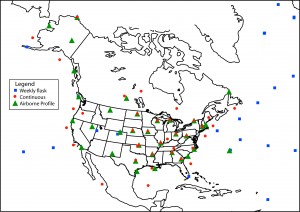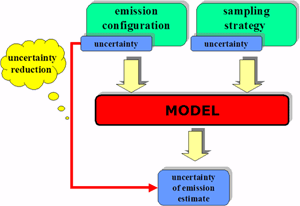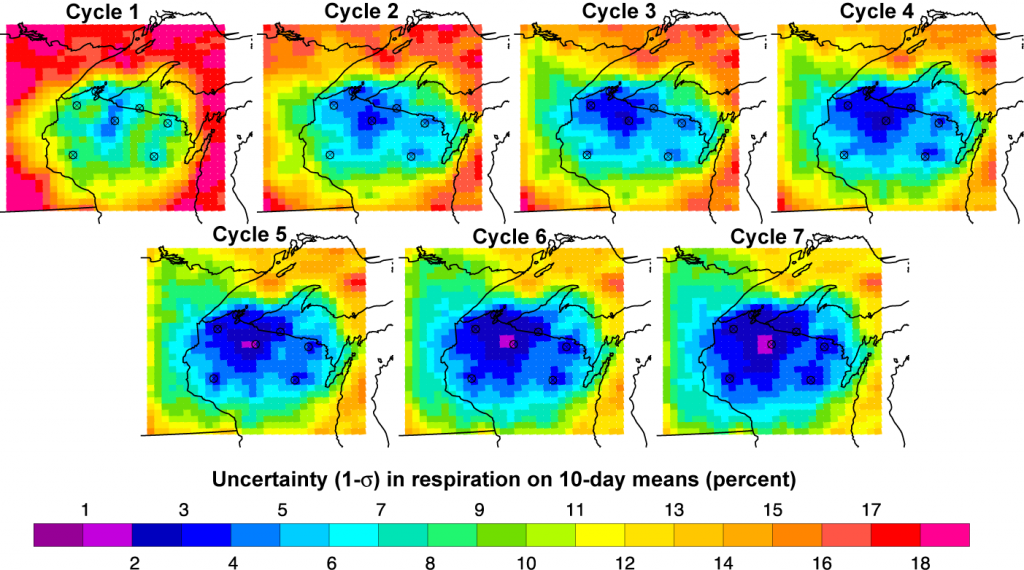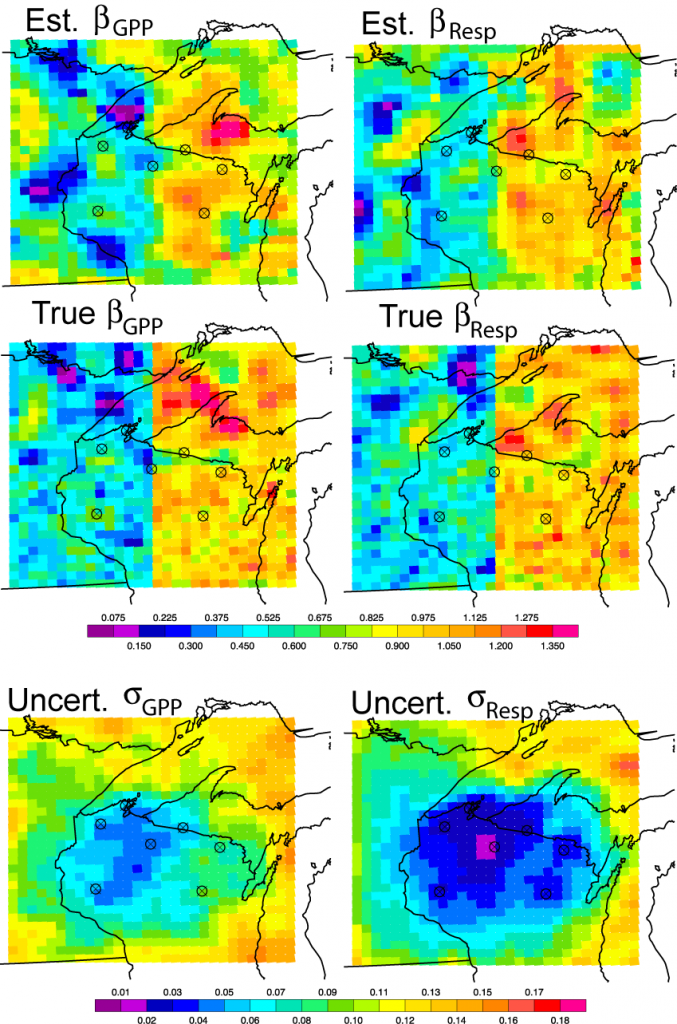NASA SiB-RAMS NACP
Mesoscale Carbon Data Assimilation for NACP
NASA Carbon Cycle & Ecosystems 2007-2009
 The North American Carbon Program (NACP) is a multi‐year program of integrated research supported by many US agencies which seeks to quantify the current budget of CO2, CO, and CH4 over North America, to understand and predict the processes governing these fluxes, and to provide timely and practical information products to support management decisions. A major component of NACP is a greatly enhanced system for observing temporal and spatial variations for carbon gases in the atmosphere over North America and adjacent coastal oceans. After 2007, the dense in‐situ network of atmospheric measurements for NACP will be augmented by hundreds of thousands of column CO2 observations each day made from NASA’s Orbiting Carbon Observatory (OCO). These new observations are intended both to provide an integral atmospheric constraint to upscaled (“bottom‐up”) models of carbon exchange processes, and to enable quantitative but process‐agnostic estimates of regional monthly sources and sinks by (“top‐down”) transport inversion. Currently available analytical methods for flux estimation by inverse modeling involve assumptions about the spatial and temporal patterns of carbon fluxes that will be inappropriate to the much greater density of sampling by NACP and OCO.
The North American Carbon Program (NACP) is a multi‐year program of integrated research supported by many US agencies which seeks to quantify the current budget of CO2, CO, and CH4 over North America, to understand and predict the processes governing these fluxes, and to provide timely and practical information products to support management decisions. A major component of NACP is a greatly enhanced system for observing temporal and spatial variations for carbon gases in the atmosphere over North America and adjacent coastal oceans. After 2007, the dense in‐situ network of atmospheric measurements for NACP will be augmented by hundreds of thousands of column CO2 observations each day made from NASA’s Orbiting Carbon Observatory (OCO). These new observations are intended both to provide an integral atmospheric constraint to upscaled (“bottom‐up”) models of carbon exchange processes, and to enable quantitative but process‐agnostic estimates of regional monthly sources and sinks by (“top‐down”) transport inversion. Currently available analytical methods for flux estimation by inverse modeling involve assumptions about the spatial and temporal patterns of carbon fluxes that will be inappropriate to the much greater density of sampling by NACP and OCO.
 We have developed a generalized framework for flux estimation from multiple streams of carbon observations. These include spectral vegetation and land cover imagery, eddy covariance flux observations, meteorological data, and both in‐situ and remotely sensed observations of atmospheric carbon gases. This has been accomplished using Ensemble Data Assimilation (EnsDA) techniques applied to a fully coupled model of regional meteorology, ecosystem carbon fluxes, and biomass burning (SiB‐CASA‐RAMS). The coupled model simulates terrestrial carbon fluxes over North America due tophotosynthesis, autotrophic respiration, decomposition, fires, and a “residual” time‐mean source or sink. Unknown parameters related to light response, allocation, drought stress, phonological triggers, combustion efficiency, PBL entrainment, convective efficiency, and the time‐mean sink will be estimated to obtain optimum consistency with a wide variety of ecological, meteorological, and trace gas observations.
We have developed a generalized framework for flux estimation from multiple streams of carbon observations. These include spectral vegetation and land cover imagery, eddy covariance flux observations, meteorological data, and both in‐situ and remotely sensed observations of atmospheric carbon gases. This has been accomplished using Ensemble Data Assimilation (EnsDA) techniques applied to a fully coupled model of regional meteorology, ecosystem carbon fluxes, and biomass burning (SiB‐CASA‐RAMS). The coupled model simulates terrestrial carbon fluxes over North America due tophotosynthesis, autotrophic respiration, decomposition, fires, and a “residual” time‐mean source or sink. Unknown parameters related to light response, allocation, drought stress, phonological triggers, combustion efficiency, PBL entrainment, convective efficiency, and the time‐mean sink will be estimated to obtain optimum consistency with a wide variety of ecological, meteorological, and trace gas observations.
The EnsDA method does not require the development of an adjoint of the coupled model, but rather applies an optimization method that involves a large ensemble of forward simulations. Unlike previous high‐resolution inversions using transport model adjoint methods, we will not assume surface fluxes remain constant on monthly time scales, and we will not treat the transport model as “perfect.” Parameters in the forward coupled model will be quantitatively estimated, as will transport model error. The model will be integrated on a 20‐km grid over a domain including most of North America and adjacent oceans, with lateral boundary conditions specified from the output of a global model.




